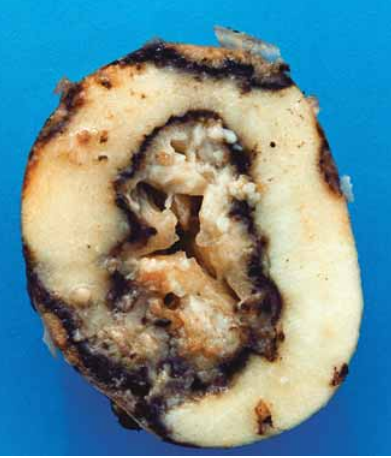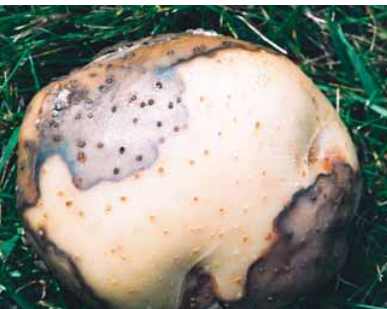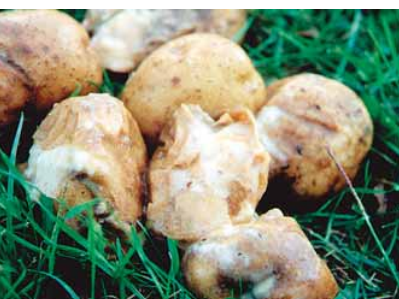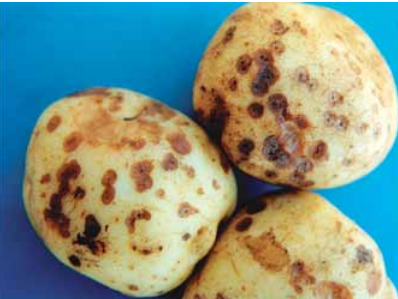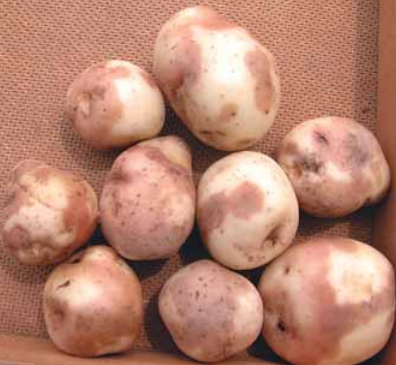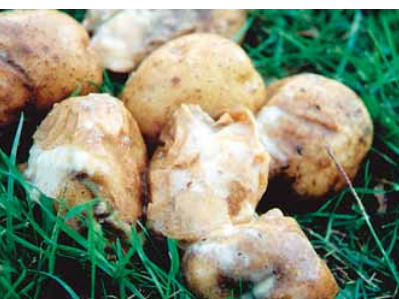Pathogen. The soft rot bacterium is common in all agricultural soils and in surface water.
Disease development. The bacterium invades tubers mainly through wounds and enlarged lenticels. Excessively wet soils favour soft rot development in the field. Tubers infected with other diseases, such as late blight and dry rot, are often invaded by the soft rot bac- terium. Also, potatoes dug, hauled, graded, washed and bagged while hot are much more likely to become infected than potatoes handled at cooler temperatures.
Wet conditions in storage allow soft rot to spread from one tuber to another.
Erwinia soft rot is odourless, but the presence of secondary bacteria causes it to turn slimy and take on a foul smell.
